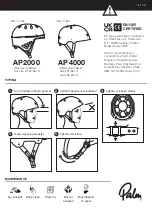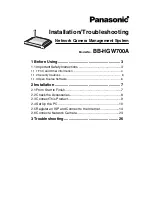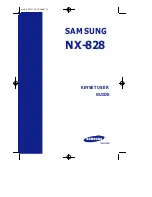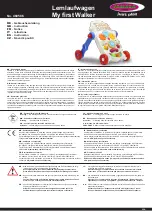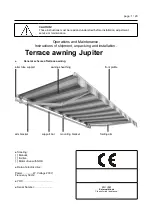
P a g e
|
17
ENERGIZER
BATTERY
MANUFACTURING
VERSION
1.2
Section
4:
Handling
Procedures
4.1
‐‐
Recommended
Operating
and
Storage
Conditions
For
optimum
performance
and
capacity
retention,
Zinc
Air
Prismatic
batteries
should
be
used
in
a
temperature
range
of
‐
10
⁰
C
to
55
⁰
C
and
in
a
relative
humidity
range
of
25%
to
80%.
Zinc
Air
batteries
should
be
stored
between
10°C
and
30°C
and
at
40%
to
70%
relative
humidity.
Batteries
should
be
stored
with
the
tab
in
place
to
prevent
performance
degradation
due
to
environmental
exposure.
As
with
any
chemical
system,
high
temperature
storage
will
result
in
increased
loss
of
capacity.
4.2
‐‐
Polarity
Markings
The
adhesive
tab
of
the
battery
covers
the
positive
can
contact
and
is
marked
with
a
positive
polarity
(+)
mark.
In
addition,
a
negative
polarity
(
‐
)
marking
is
etched
on
the
metal
cup
to
help
users
correctly
insert
the
battery
into
the
device
battery
compartment.
4.3
‐‐
Safety
Energizer
Zinc
Air
Prismatic
batteries
undergo
safety
and
abuse
testing
according
to
alkaline
and
zinc
air
industry
standards.
Some
of
the
tests
performed
include
multiple
temperature
cycling,
deep
discharge,
direct
short,
thermal
abuse,
abusive
charge.
Safety
test
performance
is
consistent
with
that
of
standard
alkaline
and
indicates
no
safety
concerns.
Under
standard
conditions,
minimal
hydrogen
gas
can
be
generated
as
in
other
alkaline
cells
and
cell
thickness
may
increase
slightly.
Under
abusive
conditions,
leakage
is
more
likely
to
occur
with
increased
cell
thickness.
In
situations
where
the
battery
is
operating
or
stored
in
temperatures
and
humidity
outside
the
recommended
ranges
in
Section
4.1
,
or
under
abusive
conditions,
the
battery
may
produce
a
small
amount
of
white
precipitate
(salting)
on
the
crimp
of
the
battery.
Energizer
recommends
that
the
battery
be
disposed
of
if
and
when
salting
is
observed.
Exposed
skin
or
clothing
should
be
cleansed
with
cool
soapy
water.
Because
of
their
size,
Zinc
Air
Prismatic
batteries
pose
a
swallowing
/
choking
hazard.
If
batteries
are
swallowed,
immediately
contact
the
National
Capital
Poison
Center
collect
at
202
‐
625
‐
3333
for
medical
advice.
4.4
‐‐
Battery
Disposal
Energizer
does
not
add
mercury
or
cadmium
to
Zinc
Air
Prismatic
batteries
therefore
they
are
exempt
from
any
special
collection
and
disposal
regulations
after
discharge.
















